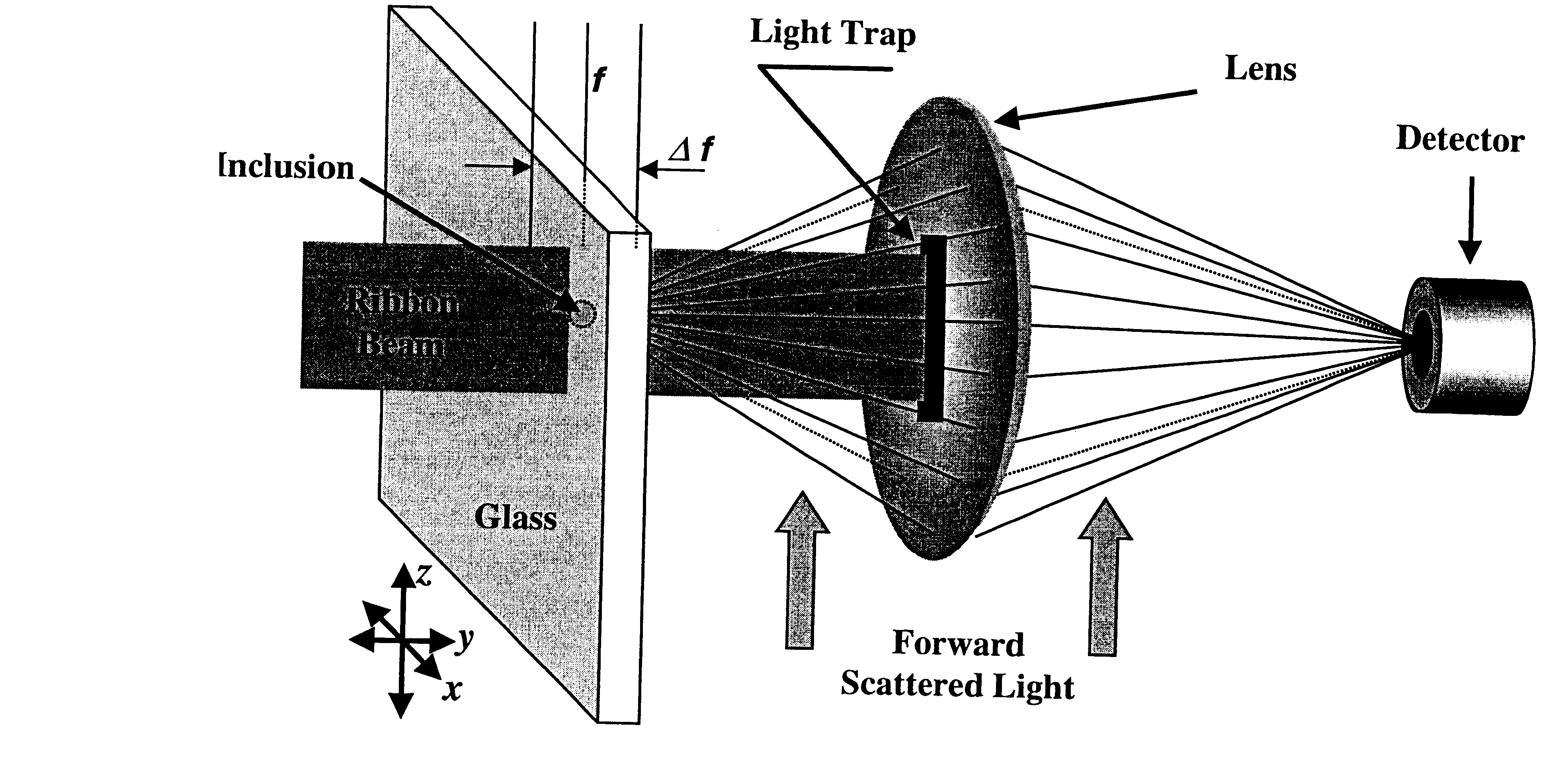Detecting inclusions in transparent sheets
a technology of inclusions and transparent sheets, applied in the field of detection of inclusions in transparent sheets, can solve the problems of sensitivity, resolution, depth of focus, and the inability to analyze bulk glass, and achieve the detection limit of 5 microns for diffuse reflection/scattering
- Summary
- Abstract
- Description
- Claims
- Application Information
AI Technical Summary
Problems solved by technology
Method used
Image
Examples
example
A boule of HPFS.RTM. is roughly in the form of a disc about 60" in diameter and varies between 6" to 10" in thickness. For making 6" size photomask substrate, for example, the 60" diameter disc is first cut into about 61 / 4.times.61 / 4" square blocks of full thickness of the disc. Each block is then sliced into numerous plates of about 1 / 4" thickness. The 61 / 4".times.61 / 4.times.1 / 4 plates are lapped and then rough polished and subsequently feed through the inspection process.
The following is an example of our system used to detect potential inclusions in a photomask blank. One of the specifications for HPFS.RTM. fused silica to be used in photomask application is no inclusions above 2 micron (1 micron for high end applications) in size. Detection of small size inclusion in glass has always been a challenge. In one embodiment, the system consists of a 15 mW He--Ne Laser (wavelength at 633 nm), convex type lens, and a photo-diode detector. The light trap is made of black anodized alumin...
PUM
| Property | Measurement | Unit |
|---|---|---|
| internal transparency | aaaaa | aaaaa |
| transparency | aaaaa | aaaaa |
| size | aaaaa | aaaaa |
Abstract
Description
Claims
Application Information
 Login to View More
Login to View More - R&D
- Intellectual Property
- Life Sciences
- Materials
- Tech Scout
- Unparalleled Data Quality
- Higher Quality Content
- 60% Fewer Hallucinations
Browse by: Latest US Patents, China's latest patents, Technical Efficacy Thesaurus, Application Domain, Technology Topic, Popular Technical Reports.
© 2025 PatSnap. All rights reserved.Legal|Privacy policy|Modern Slavery Act Transparency Statement|Sitemap|About US| Contact US: help@patsnap.com



